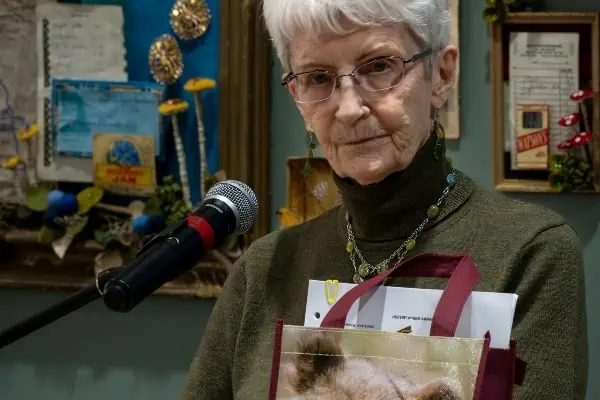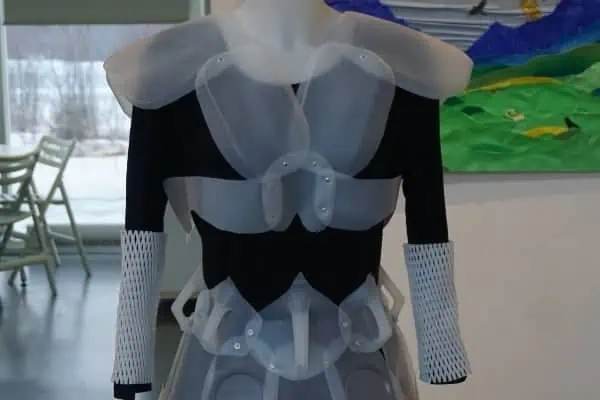When Harreson Tanner was a youngster in Ottawa reading Jack London tales of the unforgiving North, he never dreamed the San Francisco-born author would one day be a passenger in his motorhome.
But that’s what happened recently when Tanner drove to Kelowna with London strapped safely into the seat beside him.
Not the real Jack London, of course. That Jack London has been dead for nearly a century.
Tanner’s travelling companion was a life-sized ceramic bust he was taking to a south-Okanagan foundry to be cast in bronze.
“I got an email out of the blue from Rolf and Margaret Hougen saying they were interested in commissioning a bust of Jack London,” Tanner recounts. “I had done busts previously, and it took me at least three or four seconds to say yes.”
When the finished bust is unveiled this week, it will join the ranks of poet Robert Service, policeman Sam Steele and beloved Tagish storyteller Angela Sidney as a permanent part of the Whitehorse landscape.
All four commemorative sculptures are gifts to the city and to Yukon history from the retired Whitehorse businessman and his wife, both avid and generous supporters of Yukon art and artists.
Capturing a subject he had never seen in person would clearly be a challenge, but Tanner did have some knowledge of London beforehand.
“As a kid, I had read White Fang and Call of the Wild, as every kid probably did,” he says. “Certainly having been exposed to the centre up in Dawson, I knew a little bit about him.”
But preparing properly for the assignment meant immersing himself both in his subject’s writing and in his legendary but brief lifespan.
London died at his southern California ranch in 1916, probably of kidney failure, but possibly by his own hand.
“I spent about three months trying to get inside his head, trying to understand the kind of character he was,” Tanner says.
“I mean, you can go by his pictures, you can go by his writings, his essays, his short stories. And the things he accomplished in his life … he lived two or three lifetimes in his 40 years.”
The artist also looked to other sculptural installations for inspiration during a 30,000-km road trip throughout Canada and the northern U.S.
“I came back here after three months of living with Jack and started working on it and it just flowed,” he says. “It was like building up this wild tension, and all of a sudden it just started to go.”
At the time, Tanner had a studio in the McCrae industrial area, but that’s not where he chose to work.
“Because it was so important to me, I did it on the dining-room table, much to the chagrin of my wife,” he says. “I just felt it was a really comfortable space for me.”
In an hour-long conversation at that same table, Tanner never once refers to the bust as an inanimate object. It’s always “he,” “Jack,” “this fellow.” At one point it’s “Jocko, the old storyteller.”
Maybe without even noticing, he occasionally drapes an affectionate arm around the clay shoulder of his creation.
It’s obvious why the penetrating eyes, the rugged planes and angles of London’s face would appeal to the sculptor’s eye.
“He had such a great forehead, and a great jaw,” he says, running his hand gently across each of the features in turn. “He looked like John Kennedy, or Robert Kennedy.”
A touch of Ernest Hemingway, perhaps?
“Hemingway learned quite a lot from this guy,” Tanner acknowledges. “I thought it was quite neat that a lot of the really good writers afterwards started to emulate him, living as large as his stories were.”
For someone who has adopted the Yukon as his home, as Tanner did eight years ago, the legacy of London’s writing about the territory is even more appealing than his facial features.
“He describes what attracts, I think, most people into coming and staying here … the absolute majesty and the breadth of this land,” Tanner says.
One of London’s short stories, “To Build a Fire,” has particular resonance for Tanner.
“I read the story and it was absolutely frightening, it was just frightening,” he says.
“The story ends with this guy freezing to death, and just the way he described it and how unforgiving it was, it says the same thing for me that I feel about the Dempster Highway.
“I’ve shed many tears on the Dempster Highway because of the absolute, stark, amazing beauty of it. You can’t describe it, you run out of adjectives.”
Fittingly, Tanner’s only previous public installation, bronze likenesses of the late Joe and Annie Henry, now resides at the Tombstone Interpretive Centre on that very highway.
The life story of the much-loved Tr’ondëk Hwëch’in elders, who held the Guinness Book designation as the world’s longest-married couple, is inextricably linked with the Tombstone-Blackstone area.
As for his latest project, set to be unveiled at 5:00 p.m. on November 5 at the corner of Main Street and Fourth Avenue, Tanner admits the opportunity exceeded even the wildest dreams of his 66 years.
“It’s a huge honour, not only because it’s the Hougens that are doing it and they asked me, but because of the permanence of the material,” he says.
“My kids and my grandkids and great grandkids will be able to look at it and say, ‘Grandpa did that’.”




